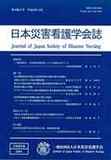Japanese
English
- 有料閲覧
- Abstract 文献概要
- 参考文献 Reference
要約
[目的]デイサービスの地震防災対策に関して家族と地域コミュニティとの連携の実態と課題を明らかにする.[方法]デイサービスの防災担当者に自記式質問紙を用いた.調査内容は,防災担当経験年数,施設震災リスクの認識,施設防災対策(防災マニュアルの有無と活用,医療情報の管理,防災訓練の実施,防災協定締結など).[結果]対象65名(50.4%),防災担当経験2年以下20名(30.8%),3〜5年22名(33.8%),6年以上23名(35.4%).施設震災リスクの立地リスクと施設耐震性の認知率は,防災担当2年以下で最も低く有意差が見られた(Cramer v,p<0.05).地震対応マニュアルの実存96.9%,活用率49.2%だった.防災協定締結は,市町村61.5%,同種施設間6.2%,地元自治会15.4%であった.家族連絡先の入手75.3%,要介護高齢者の医療情報の管理53.9%,家族への施設防災対策の情報提示23.1%であった.防災訓練は利用者参加型96.9%,家族参加型4.6%であった.[結論](1)地域コミュニティとの防災協定の締結は,公的締結に比べ著しく低く,地域連携の推進が課題である.(2)介護家族との防災連携は希薄であり,連携強化が課題である.
Aim The aim of this study is to identify the reality of and issues related to collaboration between families of users and local communities on earthquake preparedness measures at day service centers.
Method The data was collected from personnel in charge of disaster prevention at day service centers using self-administered questionnaires. Questions included the number of years of experience, awareness regarding center-specific seismic risks, preparedness (existence and use of disaster prevention manuals, medical information management, emergency drills, emergency cooperation agreements, etc.).
Results Among the 65 respondents (50.4%), 20 (30.8%) had under two years, 22 (33.8%) had three to five years, and 23 (35.4%) had at least six years of experience. The awareness of location risk and shockproof property in regard to center-specific seismic risks was significantly low among those with less than two years of experience (Cramer v, p < 0.05). And while 96.9% had an earthquake emergency manual, usage was only 49.2%. As for emergency cooperation agreements, 61.5% were at the municipal level, 6.2% were with other similar centers, and 15.4% were with local neighborhood groups. 75.3% had family contact details for their users, 53.9% were managing medical information of elderly persons requiring assistance, and 23.1% provided their preparedness information to families of users. As for emergency drills, 96.9% conduct them with users and 4.6% conduct them with the families of users.
Conclusions 1. Emergency cooperation agreements with local neighborhood groups were significantly lower than agreements with other more official organizations, thereby necessitating the promotion of such local initiatives. 2. Collaboration with the families of users is not well established and therefore requires attention.
Copyright © 2016, Japan Society of Disaster Nursing All rights reserved.


